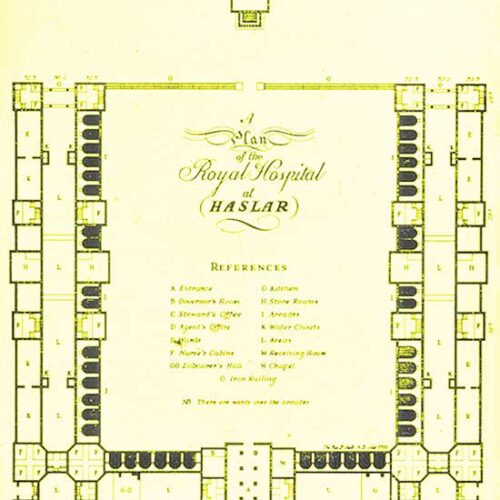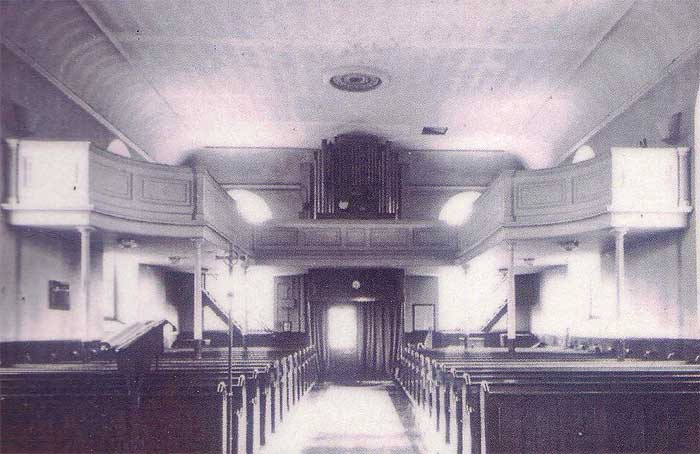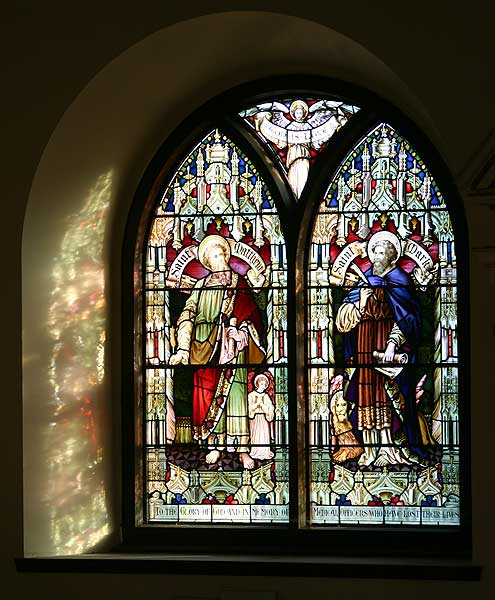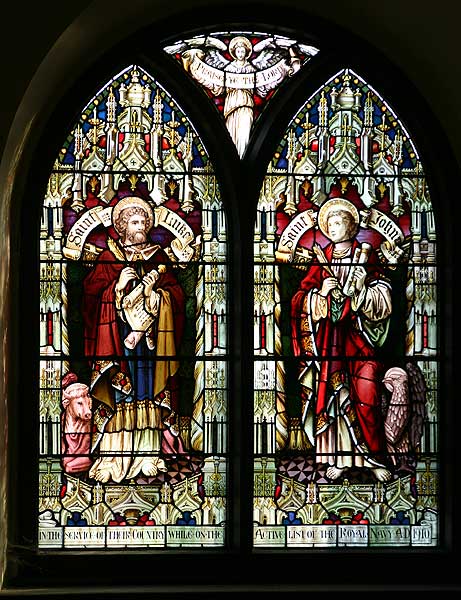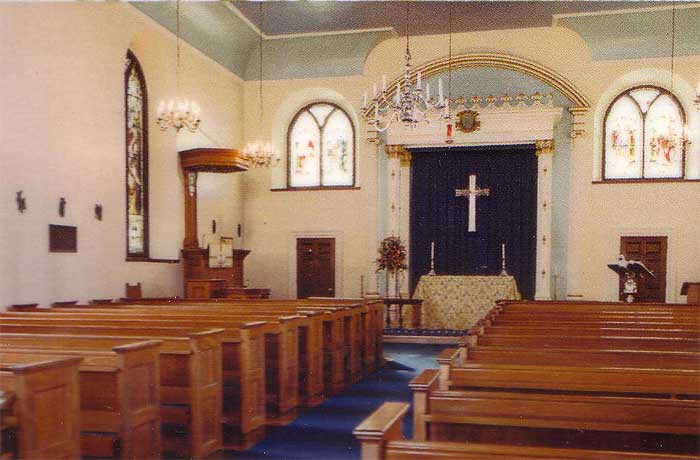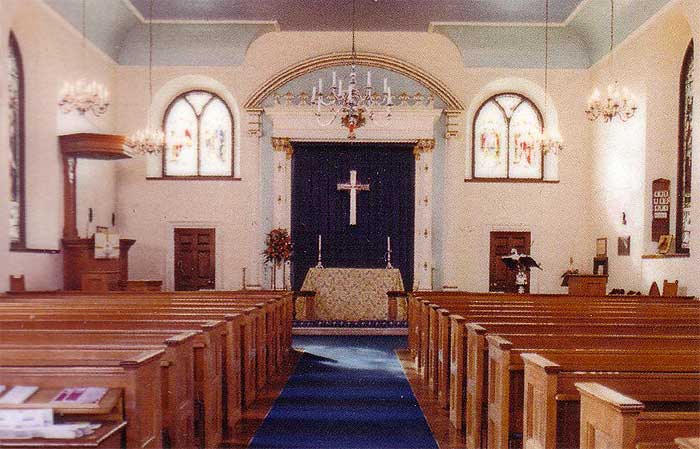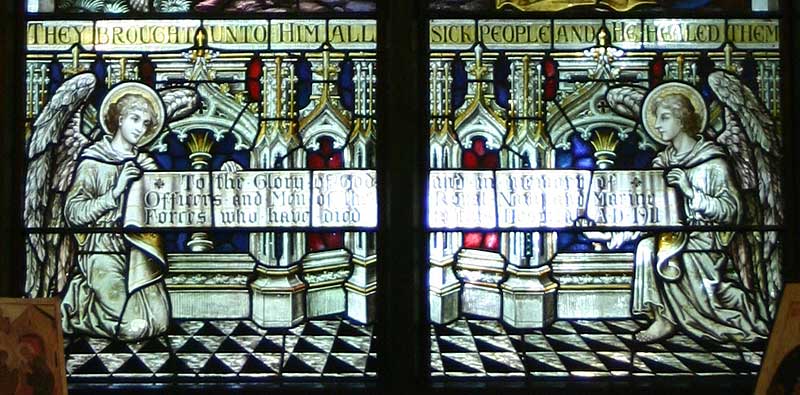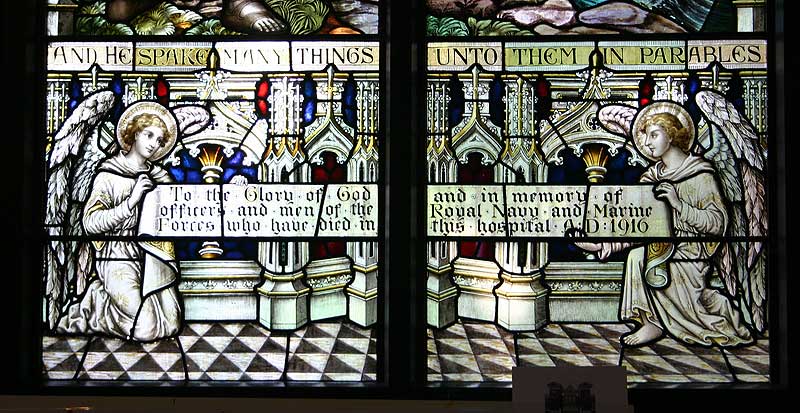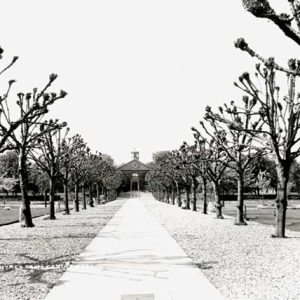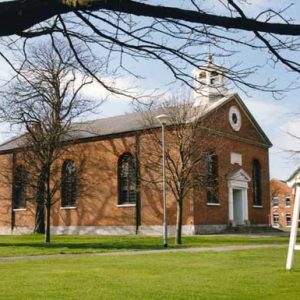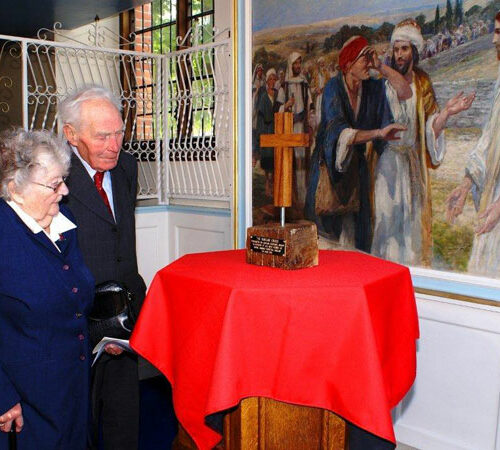St Luke's Church
The Royal Hospital Haslar was to have been built in quadrangular form and a hospital chapel to be included in the middle of the South-West Block but rising costs forced the fourth side of the hospital to be abandoned by 1756.
St Luke’s Church was erected outside of the hospital quadrangle and most authorities date the church to 1762 although there are thoughts that it was completed in 1756 but there are no records to support this or any recorded dedication to the church.
Up until 1908 the church was divided from the hospital by a metal fence with a gate which was opened for patients and staff to attend services for one requirement of the 18th century nurse was that she regularly attended divine services.
Major General John Richardson recalls from his childhood spent at Haslar mid 19th century that services at St Luke’s were boring with the choir consisting of washerwomen and the clergy given to long homilies conducive to sleep.
The Haslar Cross was presented by the Haslar Heritage Group in 2011 in memory of all those who served at Royal Naval Hospital Haslar. Here Maurice and Sylvia Bell admire the new Haslar Cross. Sylvia served at Haslar in the Voluntary Aid Detachment during WWII and at 96 has many stories to tell of her time as a VAD.
The oak cross arising from old Oak block signifies the new beginning for Haslar. The old Oak block is part of a ships timber that was used in building Haslar in 1745-62 and was taken from a ceiling in the hospital during refurbishment in 1998. Ships timbers were used in the build having been taken from ships hulks broken up on the shore of Portsmouth Harbour. The timber is believed to be 15th-17th Century. The front plaque states ‘Haslar Cross’ In memory of all who served at Haslar. The cross was made by Cdr Ken Enticknap QGM and presented to St Luke’s on the day of the service.

